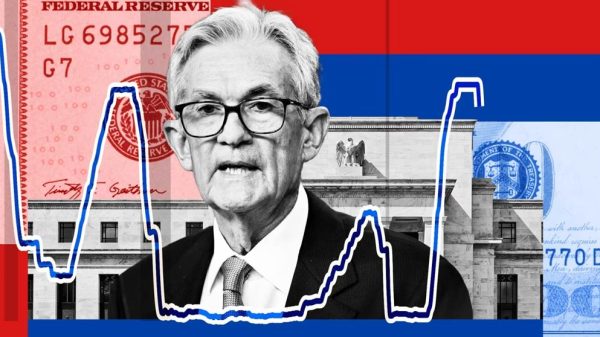In a recent report, Citi analysts have suggested that there is a possibility of gold reaching $3,000 per ounce and oil hitting $100 per barrel by 2025. While these predictions may seem ambitious, the analysts have identified several catalysts that could drive these price increases. This article will delve into the factors behind these projections and explore the potential implications for investors and the global economy.
Gold: A Perfect Storm Brewing
According to Citi, there are three primary catalysts that could drive gold prices to soar. The first is a rapid acceleration of de-dollarization among emerging market central banks. Should this trend continue, it could lead to a crisis of confidence in the U.S. dollar, prompting central banks to significantly increase their gold purchases. This scenario would challenge jewelry consumption as the main driver of gold demand.
The second catalyst is a deep global recession. In the event of such an economic downturn, the U.S. Federal Reserve might respond by cutting interest rates rapidly. As interest rates decline, gold becomes more appealing compared to fixed-income assets like bonds, leading to increased demand and potentially higher prices.
The third factor is stagflation, characterized by rising inflation, slowing economic growth, and increasing unemployment. In times of economic uncertainty, investors often seek safe-haven assets such as gold. If stagflation becomes a reality, it could drive up the demand for gold and push its price to new heights.
Oil: Geopolitical Risks and Supply Disruptions
Citi analysts also highlighted the possibility of oil prices surging to $100 per barrel. Geopolitical risks, deeper production cuts by OPEC+, and supply disruptions from key oil-producing regions are the primary catalysts for this potential price increase.
Ongoing conflicts in the Middle East, such as the Israel-Hamas war and tensions between Israel and Lebanon, have the potential to disrupt oil supplies. Additionally, countries like Iraq, Iran, Libya, Nigeria, and Venezuela are susceptible to supply disruptions due to various factors, including geopolitical tensions and potential sanctions.
Furthermore, the analysts mention the risk of Ukrainian attacks on Russian refineries and the impact it could have on Russian oil supplies. These geopolitical uncertainties could contribute to a tightening of global oil supply and drive prices upward.
Implications for Investors and the Economy
If Citi’s predictions materialize, they would have significant implications for investors and the global economy. A surge in gold prices could present opportunities for investors seeking to diversify their portfolios and hedge against economic uncertainties. However, it could also impact industries heavily reliant on gold, such as jewelry and electronics.
On the other hand, a rise in oil prices could have wide-ranging effects on businesses and consumers. Higher fuel costs would impact transportation, manufacturing, and other industries, potentially leading to increased prices for goods and services. Additionally, countries heavily dependent on oil exports would experience a boost in revenue, while oil-importing nations could face economic challenges.











